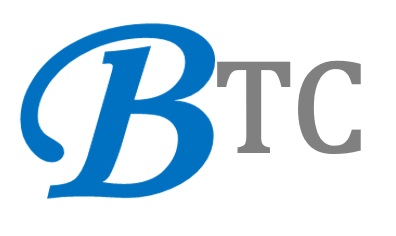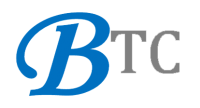
The concept of resilience, as it applies to both organizations and individuals, has evolved significantly in recent years. The term that once referred to the ability to withstand sudden change or bounce back from crisis now has a decidedly more proactive connotation. In the modern business world, highly resilient organizations and people don’t just persevere in spite of change; they capitalize on it.
Take the issues plaguing the global supply chain in just about all industries in 2021. Rather than sit idly and wait for factories in Asia to catch up with semiconductor demand, Ford Motor Co. reimagined ways to produce the computer chips directly. Eventually, Ford partnered with GlobalFoundries Inc. and effectively absorbed part of the supply chain into its own operations. That is the definition of resilience.
A resilient business is more analogous to a dam-released river than a concrete column; it creates a path as it flows toward its ultimate objective. When old channels are blocked, it rushes down new ones with even greater force than before. Like water, resilient businesses are amorphous. Their goals might be fixed, but they shape their trajectory in response to the terrain around them. In the business world, that terrain is constantly changing — thanks to technological advancement, evolving consumer behavior, industry disruption and myriad other forces.
The Building Blocks of Resilience
Organizational resiliency isn’t the result of a product, technology or strategy; it’s created by people. Resilient businesses are composed of people who aren’t just comfortable with change but who embrace it. They’re always learning, always adapting and constantly developing the qualities necessary to thrive at times when others merely hope to survive.
In today’s fast-paced business landscape, those qualities have never been more important. They’re also exceedingly rare.
The challenges modern organizations face are products of three distinct trends. The first is the ongoing compression of change, specifically technological change. Whereas cycles of technological innovation used to unfold over the span of centuries or (more recently) decades, they’re now occurring even faster. Today, major technological breakthroughs happen so quickly that we rarely have time to process them or the long-term implications they might have on our world. Moreover, the compression of technological change is creating even more rapid, sweeping transformation in other aspects of our lives. The ripple effects extend to business models and solutions, and even to our personal relationships and daily habits.
The second trend is the confluence of formerly distinct disciplines. Today, success is rarely achieved by doing one thing well. Instead, the people and companies that create real value do so by combining knowledge and ideas from often-disparate fields. They’re pioneering entirely new disciplines in the process, from nanomedicine (combining nanotechnology and drugs) to circular economies (sustainability and manufacturing). Increasingly, these new disciplines are breeding grounds for the most transformative ideas and innovations.
The final trend that organizations must contend with is pervasive and increasing complexity. The Cynefin framework, introduced by IBM’s Dave Snowden in the late 1990s, is a decision-making heuristic employed by many of today’s most effective leaders. It presents four types of challenging environments: simple, complicated, complex, and chaotic systems. As the rate of change increases, the problems that people and businesses face are becoming steadily more complex. As a result, methods and techniques that might have historically yielded solutions are no longer sufficient. Moreover, old approaches to classifying these problems are more prone to failure, leading to partial or inadequate solutions that mask challenges and allow them to linger.
Creating Real Resiliency
So how can businesses and individuals navigate these powerful forces and build real resiliency? How can they capitalize on them rather than become overwhelmed by them? Here are a few tips:
1. Focus on purpose.
Businesses and people driven by a well-defined purpose are much less likely to stagnate in the face of real or perceived challenges. To paraphrase Friedrich Nietzsche, “He who has a why to live for can bear almost any how.” A clear purpose or “why” serves as a signal in the noise, allowing us to distinguish the technologies, investments, or ideas that can truly benefit us from those that are merely distractions or fads. It can also help us identify the partners who are best suited to help us achieve our objectives.
2. Gravitate between polarities.
Polarities are interdependent pairs that appear to be in opposition but actually serve the same purpose. For example, conservative and risk-taking behaviors are polarities. There are times when a conservative approach to decision-making is prudent; other times, decisions call for boldness and greater risk tolerance. Leaning too heavily toward one polarity all the time is a recipe for failure — and a barrier to learning from failure. If we’re open to changing our approach as conditions change, we’ll be more likely to spot transformative opportunities.
3. Find inspiration outside your industry.
Leaders who are deliberate about exploring trends and ideas that are shaping other sectors often find ways to apply those concepts to their own work. Sometimes, the results are relatively mundane: they might stumble upon new operational efficiencies or augment existing workflows with new methodologies, for instance.
Occasionally, however, the combination of knowledge from two or more seemingly unrelated fields can lead to the creation of entirely new products, or even whole new business models. Consider the emergence of Get Shift Done, a nonprofit initiative that helps link displaced hospitality workers to food banks that need assistance. To date, more than 20,000 furloughed or laid-off hospitality workers are registered on the Shiftsmart app, working for various nonprofits to provide food to others in need while getting much-needed income themselves.The professionals and organizations who understand that change is the defining characteristic of the modern business landscape — and embrace rather than ignore or run from it — will ultimately decide where transformation leads. Look for opportunities to apply the tips above as you progress through your own journey toward greater resiliency, and success will almost assuredly follow.
This post is written by Margaret Scovern.
Original post link: https://www.entrepreneur.com/article/403947

